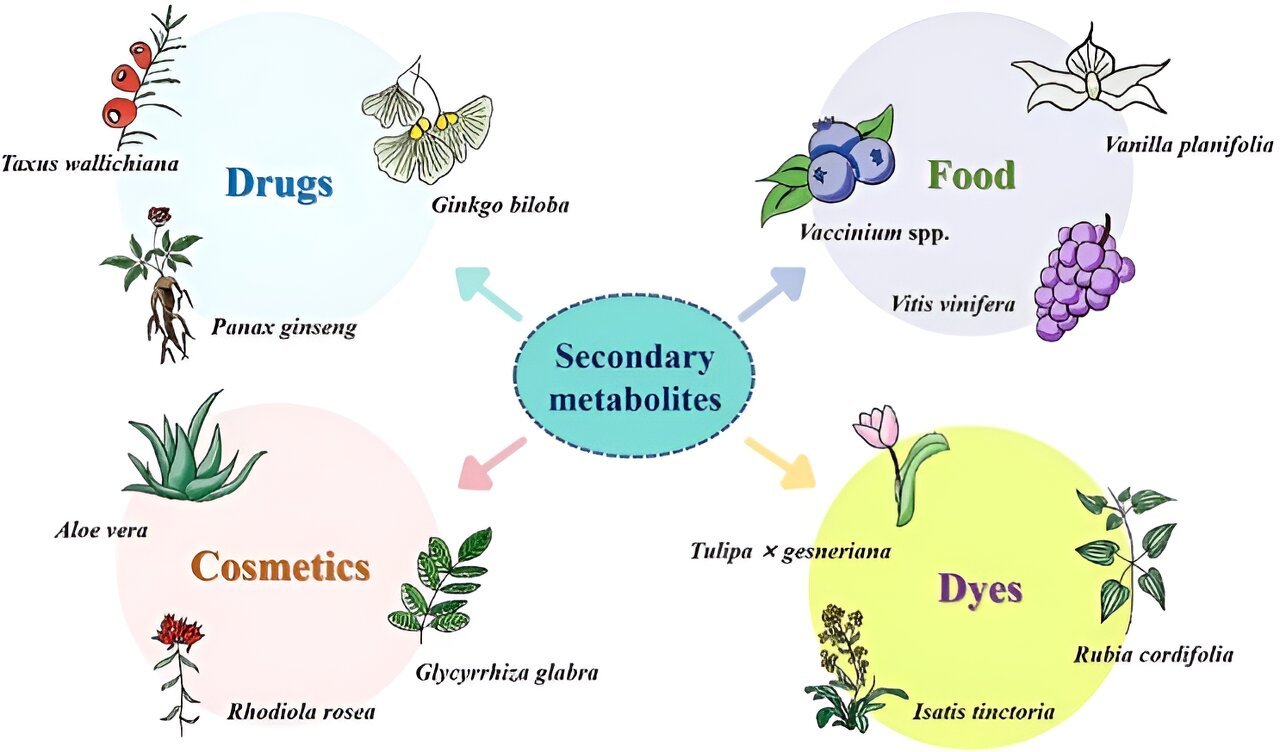
A recent study highlights the pivotal role of alternative splicing in controlling plant secondary metabolism, which is crucial for producing bioactive compounds with significant medicinal and industrial value. This research sheds light on the molecular mechanisms underlying plant metabolism and opens new avenues for enhancing the production of valuable plant-derived metabolites.
Plants synthesize a diverse array of secondary metabolites, including terpenoids, flavonoids, and alkaloids, essential for their growth, development, and defense against environmental challenges. These compounds are widely used in medicine, agriculture, and industry.
Despite their importance, the regulation of their biosynthesis remains complex and not fully understood. Alternative splicing—a common post-transcriptional process—has emerged as a key regulatory mechanism. Addressing these complexities, the study of alternative splicing in plant secondary metabolism is crucial to advancing our understanding of these pathways.
Conducted by researchers at Shanghai University of Traditional Chinese Medicine and published on July 2, 2024, in Horticulture Research, this study explores how alternative splicing influences plant secondary metabolism. The research provides a comprehensive review of the regulatory impact of alternative splicing on the biosynthesis of secondary metabolites, including terpenoids and phenolic compounds.
The findings emphasize the importance of alternative splicing in helping plants adapt to environmental stress, offering new insights for bioengineering approaches to enhance plant performance and metabolite production.
The study investigates the detailed mechanisms of alternative splicing in plant secondary metabolism, focusing on its effects on terpenoids, phenolic compounds, and nitrogen-containing metabolites. By altering the expression of key metabolic genes, alternative splicing generates diverse mRNA transcripts, which enhance protein diversity and metabolic flexibility. This regulatory mechanism allows plants to adjust to environmental fluctuations by modulating metabolite synthesis.
Notable examples include the splicing of Myeloblastosis (MYB) and basic helix–hoop–helix (bHLH) transcription factors that regulate flavonoid biosynthesis, and enzymes like lipoxygenase (LOX) and strictosidine β-d-glucosidase (SGD), which influence terpenoid and alkaloid production.
The study also highlights the role of phytohormones such as jasmonic acid and abscisic acid in modulating these pathways, demonstrating how alternative splicing responds dynamically to biotic and abiotic stresses. This research provides a pathway for targeted interventions to optimize secondary metabolite production.
Dr. Ying Xiao, one of the lead authors, noted, “Our research highlights alternative splicing as a crucial regulatory mechanism in plant secondary metabolism. It not only affects the synthesis of essential metabolites but also boosts plants’ resilience to environmental stress.
“By understanding these processes, we can develop innovative bioengineering strategies to improve plant productivity and increase yields of valuable metabolites. This study lays the groundwork for further exploration into the complex interplay between gene expression, splicing, and metabolic regulation.”
The study’s implications extend across agriculture, medicine, and industry. Understanding the regulatory role of alternative splicing can drive bioengineering efforts to enhance the production of high-value metabolites, including antioxidants, anticancer compounds, and natural flavorings.
Such advancements could lead to the development of stress-resilient crops with enhanced yields of beneficial compounds, supporting sustainable agriculture and the production of natural bioactives. Future research will focus on manipulating splicing mechanisms to further optimize plant metabolic pathways for improved performance.
More information:
Zihan Xu et al, Relevance and regulation of alternative splicing in plant secondary metabolism: current understanding and future directions, Horticulture Research (2024). DOI: 10.1093/hr/uhae173
Provided by
NanJing Agricultural University
Citation:
Exploring how alternative splicing influences plant secondary metabolism (2024, September 12)
retrieved 12 September 2024
from https://phys.org/news/2024-09-exploring-alternative-splicing-secondary-metabolism.html
This document is subject to copyright. Apart from any fair dealing for the purpose of private study or research, no
part may be reproduced without the written permission. The content is provided for information purposes only.
